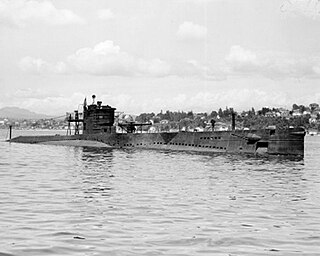
USS S-28 (SS-133) was an S-class submarine of the United States Navy. A diesel submarine, she served in World War II during which sank one Japanese ship. She was lost at sea with all hands in July 1944. Her wreck was discovered in 2017 at a depth of 8,500 feet (2,600 m) off the coast of Oahu.
The Medium Endurance Cutter or WMEC is a type of United States Coast Guard Cutter mainly consisting of the 270-foot (82 m) Famous- and 210-foot (64 m) Reliance-class cutters. These larger cutters are under control of Area Commands. These cutters have adequate accommodations for crew to live on board and can do 6 to 8 week patrols.
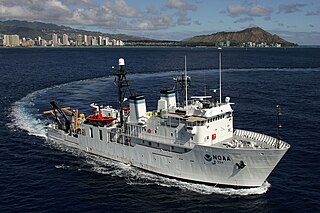
USNS Vindicator (T-AGOS-3) was a United States Navy Stalwart-class modified tactical auxiliary general ocean surveillance ship that was in service from 1984 to 1993. Vindicator then served in the United States Coast Guard from 1994 to 2001 as the medium endurance cutter USCGC Vindicator (WMEC-3). From 2004 to 2020, she was in commission in the National Oceanic and Atmospheric Administration (NOAA) fleet as the oceanographic research ship NOAAS Hiʻialakai.

USS Unimak (AVP-31) was a United States Navy Barnegat-class small seaplane tender in commission from 1943 to 1946 that saw service in World War II. After the war, she was in commission in the United States Coast Guard as the cutter USCGC Unimak (WAVP-379), later WHEC-379, WTR-379, and again WHEC-379, from 1949 to 1975 and from 1977 to 1988.

USCGC Cuyahoga (WIX-157) was an Active-class patrol boat built in 1927 which saw action in World War II. Cuyahoga sank after a night-time collision in the Chesapeake Bay while on patrol in 1978. She was later raised and re-sunk as an artificial reef off the Virginia coast and is a popular recreational dive site.

USCGC Active (WPC-125), later WSC-125, was a United States Coast Guard patrol boat in commission from 1926 to 1947 and from 1951 to 1962. She was the first vessel of the Coast Guard and the seventh of the United States Revenue Cutter Service or Coast Guard to bear the name Active.

The Active-class patrol boat was one of the most useful and long-lasting classes of United States Coast Guard cutters. Of the 35 built in the 1920s, 16 were still in service during the 1960s. The last to be decommissioned from active service was the Morris in 1970; the last in actual service was the Cuyahoga, which sank after an accidental collision in 1978.

USCGC General Greene (WPC/WSC/WMEC-140), was a 125 ft (38 m) United States Coast Guard Active-class patrol boat, in commission from 1927 to 1968 and the fourth cutter to bear the name of the famous Revolutionary War general, Nathanael Greene. She served during the Rum Patrol, World War II and into the 1960s performing defense, law enforcement, ice patrol, and search and rescue missions.

USCGC Marion (WSC-145), was a 125 ft (38 m) United States Coast Guard Active-class patrol boat in commission from 1927 to 1962. She was named for Francis Marion, an American Revolutionary War general who was known for his unconventional warfare tactics. Marion served during the Rum Patrol and World War II performing defense, law enforcement, ice patrol, and search and rescue missions. Most notably, Marion served as the platform for the first intensive oceanographic studies made by the Coast Guard.

USCGC Crawford (WSC-134), was a 125 ft (38 m) United States Coast Guard Active-class patrol boat in commission from 1927 to 1947. She was named for William H. Crawford, (1772–1834) who was appointed in 1816 as Secretary of the Treasury by President James Madison and he continued under President James Monroe through 1825. Crawford was the seventh vessel commissioned by the U.S. Revenue Cutter Service and the Coast Guard named after the former secretary. She served during the Rum Patrol and World War II performing defense, law enforcement, ice patrol, and search and rescue missions.

USCGC Argo (WPC-100) was a Thetis-class patrol boat belonging to the United States Coast Guard launched on 12 November 1932 and commissioned on 6 January 1933.

USCGC Travis (WSC-153) was a US Coast Guard Active-class patrol boat cutter. It was built to combat the rum-running trade.

USCGC Legare (WSC-144) was cutter that served in the United States Coast Guard for almost forty-one years.

USCGC Maui (WPB-1304) was a United States Coast Guard Island-class patrol boat homeported in Manama, Bahrain. She was named after the second-largest of the Hawaiian Islands, Maui.

USCGC Morris (WSC-147), was a 125 ft (38 m) United States Coast Guard Active-class patrol boat in commission from 1927 to 1971. She was named for Robert Morris, (1734–1806) who was appointed in 1789 as United States Senator from Pennsylvania. In May 1966, she was redesignated as (WMEC-147).

USCGC McLane (WSC-146) is a 125 ft (38 m) United States Coast Guard Active-class patrol boat in commission from 1927 to 1971. She was named for Louis McLane, (1786–1857) who was appointed in 1833 as United States Secretary of State. In May 1966, she was redesignated as (WMEC-146).
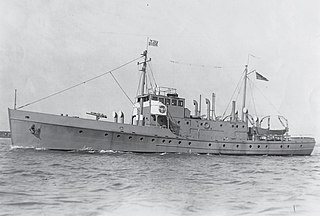
USCGC Jackson (WSC-142) was an Active-class cutter of the United States Coast Guard. She capsized in 1944, killing twenty one of her forty crew members.
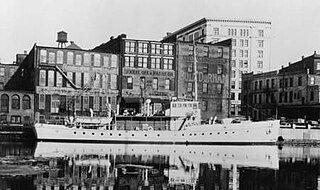
USCGC Antietam (WSC-128), later Bedloe was an Active-class cutter of the United States Coast Guard where she was commissioned from 1927 to 1944. She sank in 1944, killing 26 crewmembers.
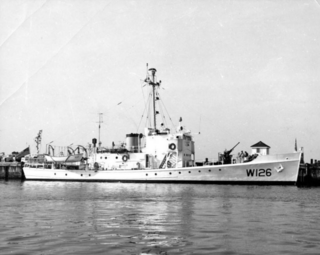
USCGC Agassiz (WSC-126) later WMEC-126, was a steel hulled, single screw Active-class patrol boat of the United States Coast Guard which served between 1927 and 1969.
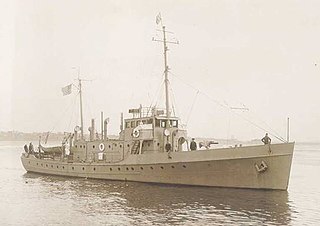
The USCGC Tiger (WSC-152) was an Active-class patrol boat of the United States Coast Guard. The vessel guarded the entrance to Pearl Harbor all day and night on December 7, during the Attack on Pearl Harbor during World War II.














